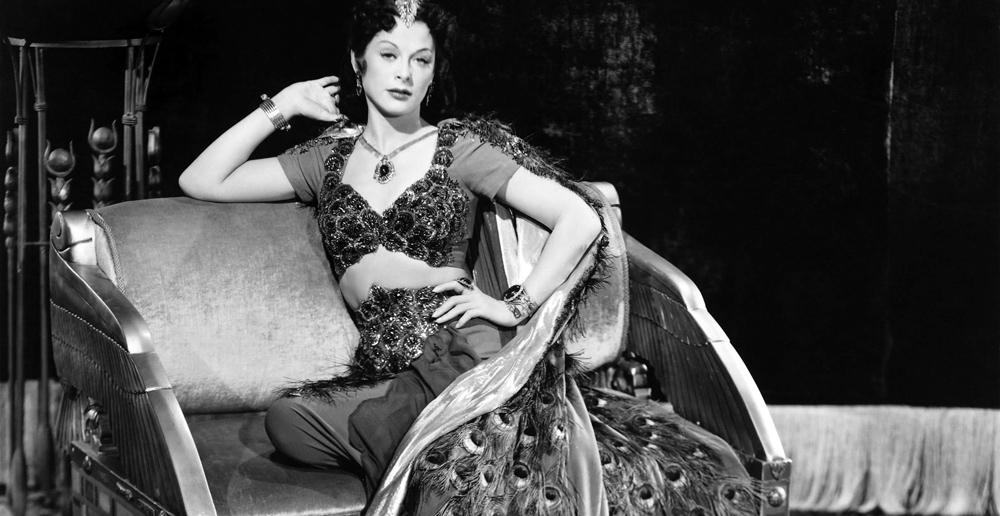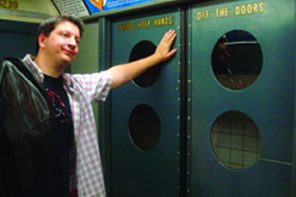We ride in their creations, listen to them, play games with them. Without them, the world would be a truly inconvenient, less exciting place. And yet, we don’t really know the local men behind some of the world’s great inventions.
Here now are their stories:
Edwin Howard Armstrong
Invention: FM Radio
Local connection: Yonkers
The house of the sometimes forgotten – and often disputed – father of FM radio still stands at 1032 Warburton Ave. in Yonkers.
Edwin Howard Armstrong was born in New York City, but at age 12 moved to Yonkers with his family. It was at a friend’s house in Yonkers that the first public FM broadcast was made in 1935, according to the Yonkers Historical Society. Armstrong’s house was designated a historical landmark by the society in 1978, the attic where he began his career as an inventor still intact.
After graduating from Columbia University, Armstrong developed several radio circuits and in the World War I-era built the regenerative and super-regenerative circuit and the superheterodyne receiver. These paved the way for his seminal creation, FM radio, which allowed for the reception of more frequencies and an overall crisper sound than AM radio. It was controversial because its transmission required new equipment for the media giants of the time.
Though he became a millionaire during the radio boom of the 1920s, selling patent rights to major corporations, FM radio brought Armstrong into conflict with onetime collaborator, RCA, and its president, David Sarnoff, a Scarsdale resident. Seeking to develop TV technology, RCA parted ways with Armstrong, who continued to pursue the implementation of FM while Sarnoff used his considerable corporate might to hinder him at every turn.
Eventually, Armstrong filed 21 patent lawsuits related to his FM creation, among them a suit against RCA that claimed the company had no right to the patent. His status as inventor of regenerative circuits was also contested.
Emotionally and financially drained by his rivalry with Sarnoff and ongoing legal battles, Armstrong committed suicide in 1954, jumping out of the window of his 13th story apartment in Manhattan.
Though his inventions changed the broadcast industry, the principles of regenerative circuitry and the superheterodyne are still used in radio and other transmissions today, Armstrong is not a household name. This despite the compelling Ken Burns documentary, “Empire of the Air,” which PBS broadcast in 1992. A tale of communication and miscommunication, it portrays the brilliant, brittle Armstrong as a latter-day Greek hero, whose strength was his weakness and whose triumph contained the seeds of his tragedy.
Leo Baekeland
Invention: Bakelite
Local connection: Yonkers
Belgium-born inventor Leo Baekeland died with more than 50 patents to his name. In the late 19th century, he was a partner in a chemical company in Yonkers.
The company was later sold, but the eccentric Baekeland set up a laboratory in his Yonkers home, which historians refer to as Snug Rock.
In the early 1900s, he patented Velox, a photographic paper that he eventually sold to Eastman Kodak. Still, it is his invention of Bakelite in 1907 Yonkers for which he is best remembered.
Bakelite was the first synthetic plastic and it became a common component in everything from toys to telephones. Moreover, it set in motion the 20th century’s plastics revolution, as Bakelite was used in car components and light sockets, among other modern conveniences. By Baekeland’s death in 1944, global production of phenoplastics exceeded 175,000 tons, according to the Hudson River Museum.
Want to impress your friends at your next dinner party? Memorize and learn to pronounce Bakelite’s chemical name – polyoxybenzylmethylenglycolanhydride.
Elisha Otis
Invention: Otis Elevator
Local connection: Yonkers
The Otis Elevator Co. was started in Yonkers in the mid-1800s by Elisha Otis, who was born in Vermont and struggled through several professions before developing what is called the “safety elevator” while living in Yonkers.
Although Otis didn’t come up with the concept of an elevator system himself, he revolutionized elevation by removing its No. 1 safety concern. Prior to Otis, if the rope holding an elevator broke, that elevator would plunge. Otis developed and later patented a system that included a cab, allowed for braking and improved safety so that the ropes could break and the elevator would not plunge from its hoist.
The Otis Elevator Co. was formed after a successful demonstration of the safety elevator at New York’s Crystal Palace Exhibition in 1853. The company would become perhaps the best-known of its type in the world, with Otis elevators installed in such iconic structures as the Empire State Building. Indeed, the elevator, along with the manufacture of steel, made the skyscraper possible.
Today, the company is owned by conglomerate United Technologies and is based in Hartford County.
Charles Goodyear
Invention: Vulcanization of rubber
Local connection: New Haven
Charles Goodyear was born in New Haven in 1800 and struggled financially and professionally from his earliest days. Goodyear was obsessed with improving the limits of rubber, which in its natural state is sticky, not durable and affected greatly by changes in the weather.
He worked to develop an improved rubber gum but faced increased debt. His focus undeterred, he reportedly sold many of his family’s possessions to finance his experiments. He even went to jail several times due to his outstanding debts, but biographers said he continued to formulate new ideas for rubber while behind bars.
The inventor finally figured out vulcanization, the process of heating rubber and substances like sulfur to make rubber stronger and more solid. (The name comes from Vulcan, the Roman god of fire and the smith.) Vulcanization would be used in shoe soles and tires. How exactly Goodyear discovered how to vulcanize rubber is a story lost to history. Some say he learned the process serendipitously. His claim to having invented the process was later contested.
Goodyear lost the patent, beat out by Thomas Hancock, an Englishman who had a better scientific understanding of the physics of the process. Goodyear died in debt, but became the namesake for the famous Goodyear Tire & Rubber Co., which has no affiliation with his family.
Alfred Mosher Butts, James Brunot
Invention: Scrabble
Local connection: Poughkeepsie and Bridgeport
Alfred Butts was a Poughkeepsie-born architect who invented Scrabble in the 1930s. The game combined skill with the luck of the draw of the letters. Butts analyzed in-depth letter frequency in words to develop the scoring method and number of tiles, limiting the number of “S” tiles so that you couldn’t rack up points by pluralizing words. He called the game Criss Cross Words.
According to legend, the word lover tried to sell the idea for the board game to several manufacturers who rejected the idea and he continued his day job as an architect. His friend James Brunot, a Bridgeport resident, became its promoter. He and his wife renamed the game Scrabble and opened a manufacturing plant in a converted schoolhouse, according to the National Scrabble Association.
The Brunots struggled in the early days, with Brunot keeping his day job for several years while sales were slow. One year, the company lost $450. By the 1950s, the game’s popularity caught on and became a household item, but the Brunots couldn’t keep up with demand and licensed the game to a commercial manufacturer.
Brunot died in the 1980s and Butts in the 1990s. They never got to try “Words with Friends,” the cellphone app and deliberate Scrabble knockoff.
Joseph Engelberger and George Devol
Invention: The Robot
Local connection: Bethel
The word “robot” was coined by Isaac Asimov, but it was one of his students at Columbia University who’s considered the father of robotics. Joseph Engelberger was born in New York City, but it was his work as president of Fairfield-based Unimation Inc. that set the robotics industry in motion.
Engelberger, a bow-tied businessman, built Unimate, which was the first truly industrial robot in the world. He did so by licensing the 1953 patent of George Devol, a Kentucky-born inventor who had previously worked on photo cell technology. With the financial backing of Condec, which owned Unimation, and Devol’s patent, Unimation built Unimate
Unimate and Engelberger eventually appeared on “The Tonight Show with Johnny Carson” in 1960s and the technology was employed at a General Motors factory in New Jersey. It is now in the Smithsonian Institution. Devol died in 2011 at his Wilton home, while Engelberger still lives in the area and has since worked with other robotics-developing companies.
With Reporting by Danielle Renda.




